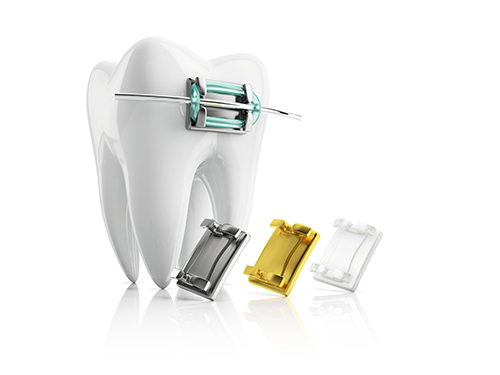 Few people are lucky enough to be born with perfect teeth, but with the help of orthodontic treatment, many people are getting there. Most people think of the dreaded and outdated headgear appliances when they’re first told they need braces, but nowadays, we are afforded the luxury of many different options to choose from to correct our teeth. Your orthodontist may recommend any of the following types of braces to help in your particular situation, so it is important to educate yourself on your options before your first appointment.
Few people are lucky enough to be born with perfect teeth, but with the help of orthodontic treatment, many people are getting there. Most people think of the dreaded and outdated headgear appliances when they’re first told they need braces, but nowadays, we are afforded the luxury of many different options to choose from to correct our teeth. Your orthodontist may recommend any of the following types of braces to help in your particular situation, so it is important to educate yourself on your options before your first appointment.
- Metal Braces – These braces consist of metal brackets made from high-grade stainless steel. The brackets are attached to the target teeth with a bonding cement. A thin wire is anchored on to the brackets with tiny elastics to connect the individual brackets. When tightened, the wire will put pressure on the teeth, allowing them to slowly move into the ideal position.
- Ceramic Braces – Ceramic braces work similarly to traditional metal braces. In contrast to stainless steel, these braces are made from a clear ceramic material to make them less visible.
- Lingual Braces – Lingual braces are traditional metal braces that are fastened on the inside of the teeth. A patient may choose this option if they are looking for a treatment that is less visible to others.
- Colored Braces – Basically traditional metal or ceramic braces, colored braces come in a variety of colors for patients who want to make their orthodontic treatment exciting and fashionable.
- Invisalign® – Invisalign® is a trending alternative to braces altogether that has been growing in popularity in recent years. Rather than correcting teeth through brackets and wires, Invisalign® employs the use of a range of clear, plastic aligners that are unique for each patient and are replaced every two weeks. These aligners resemble mouth guards and slowly move teeth into the proper position, as every new aligner adjusts your teeth one step closer to the target position. While the aligners should be worn at all times, except for eating and cleaning, patients typically don’t feel the embarrassing need to remove them as they are virtually invisible when worn.
- Clear Braces – Clear braces are another alternative for those who wish to obscure their braces but don’t qualify for lingual braces. They are similar to traditional braces but made from a transparent ceramic material.


